Hollowness under the eyes is a common problem that can even appear in young people. People suffering from under eye hollowing often want a permanent solution, which they think can be done with implants, or fat grafting. I’ll discuss how I counsel my patients about the options for sunken eyes in my practice.
For patients who’ve come to me for under eye hollowing, I have performed procedures such as the placement of tear trough implants, and I’m also well known for my work with cosmetic fillers throughout the face, including the under eye area to treat hollowing and slight eye bags.
It’s a common request from patients to have a permanent solution for many things including under eye hollowness. Earlier in my career, long before the introduction of injectable fillers, I would place implants called tear trough implants.
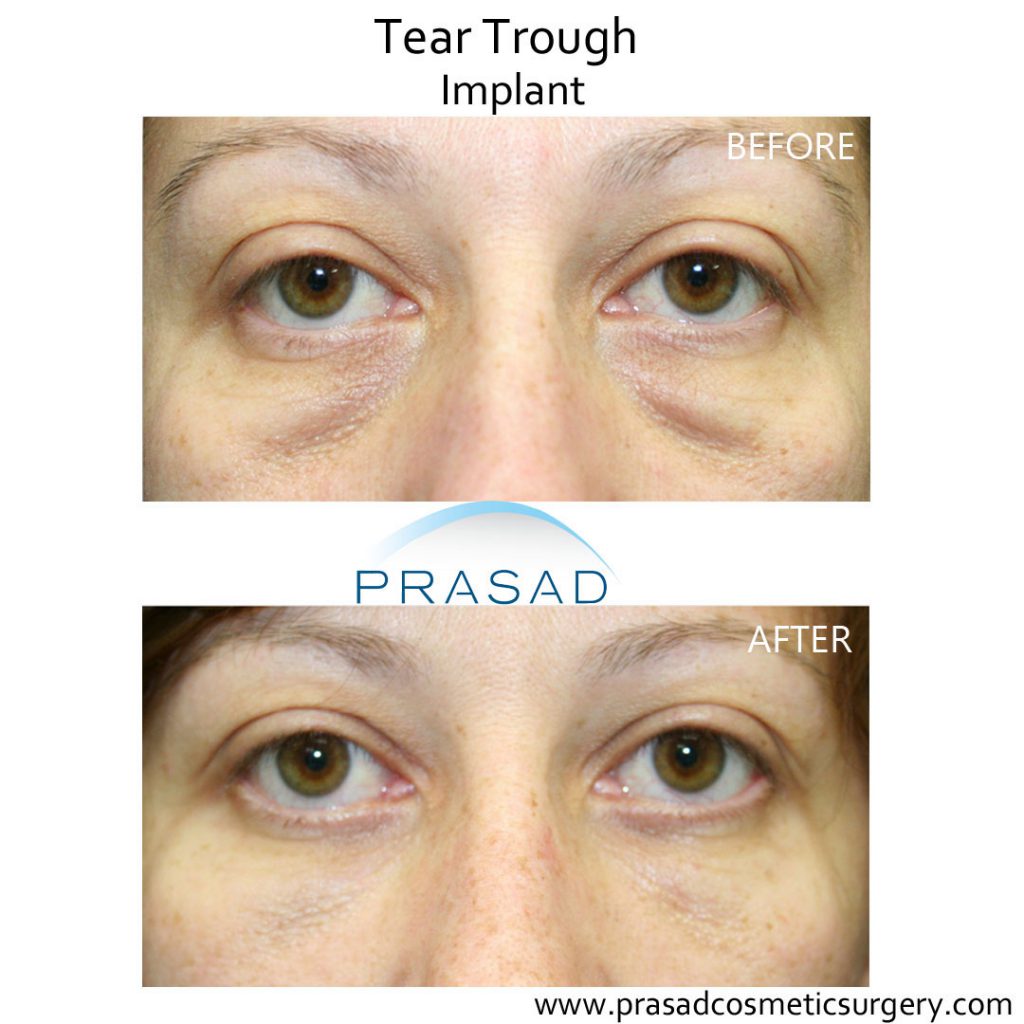
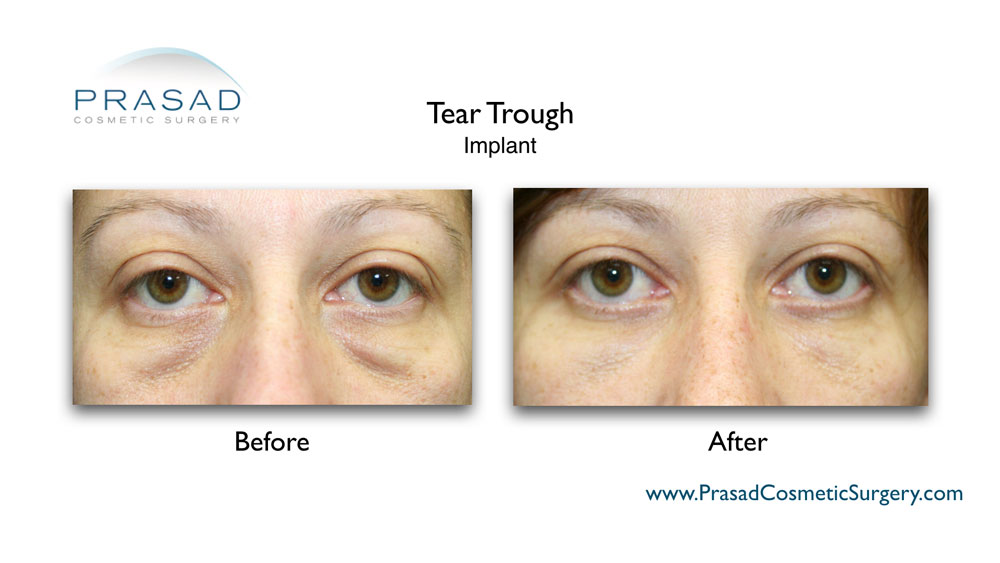
What is Tear Trough Implants?
Tear trough implants are made of soft silicone, and are specifically designed for the under eye area. When I perform tear trough implant surgery, I insert them through a transconjunctival approach, meaning from the inside of the eyelids without any external or visible incision. We understand very well how facial aging is proportionately greater at the bone level, which means bone loss will progress regardless of the presence of an implant. This means that with normal aging, where facial dimensions change, and the face becomes smaller, the implant may become more visible.
Another so-called “permanent” option, which is offered is fat grafting. Simply stated, fat does not provide uniform and predictable improvement. 30-70% of grafted fat does not survive as it needs to take to a blood supply, and the fat that does take to a new blood supply can become lumpy and irregular . Patients come to us from around the world distressed about the results of fat grafting under the eyes with the desire to have them removed. Technically, the procedures for removal and grafted fat under the eyes is complex and often requires multiple surgeries.
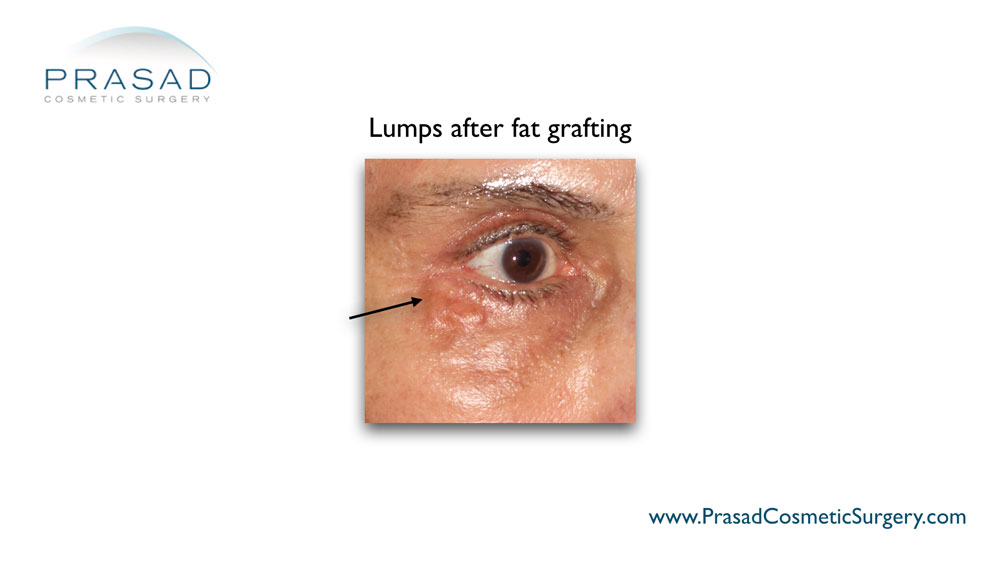
Some doctors offer permanent or semi-permanent fillers. In my opinion I would prefer to use a filler that can be easily removed. If any of these semi-permanent and permanent fillers were to be seeded with bacteria resulting in biofilm or infection, management can be very difficult. Permanent and semi-permanent fillers are more prone to foreign body reactions, unlike hyaluronic acid fillers as hyaluronic acid is already naturally present in the body. Once again, placing something permanent in the soft tissue can be cosmetically problematic as aging and volume loss naturally progresses. Like fat grafting, removing permanent or semi-permanent fillers is an extremely complicated process, and not all the material will be removed.
What is the Best Filler for Under Eye Hollows?
At this time, my preferred treatment for under eye hollowing is with a soft hyaluronic acid filler such as Restylane or Juvederm. I place these fillers in my office exam room with minimal trauma using blunt cannulas. This approach allows me to improve under eye hollows with precision and usually without bruising. Soft tissue fillers move well with facial expressions, and they have no rigid edges which are more often associated with implants.
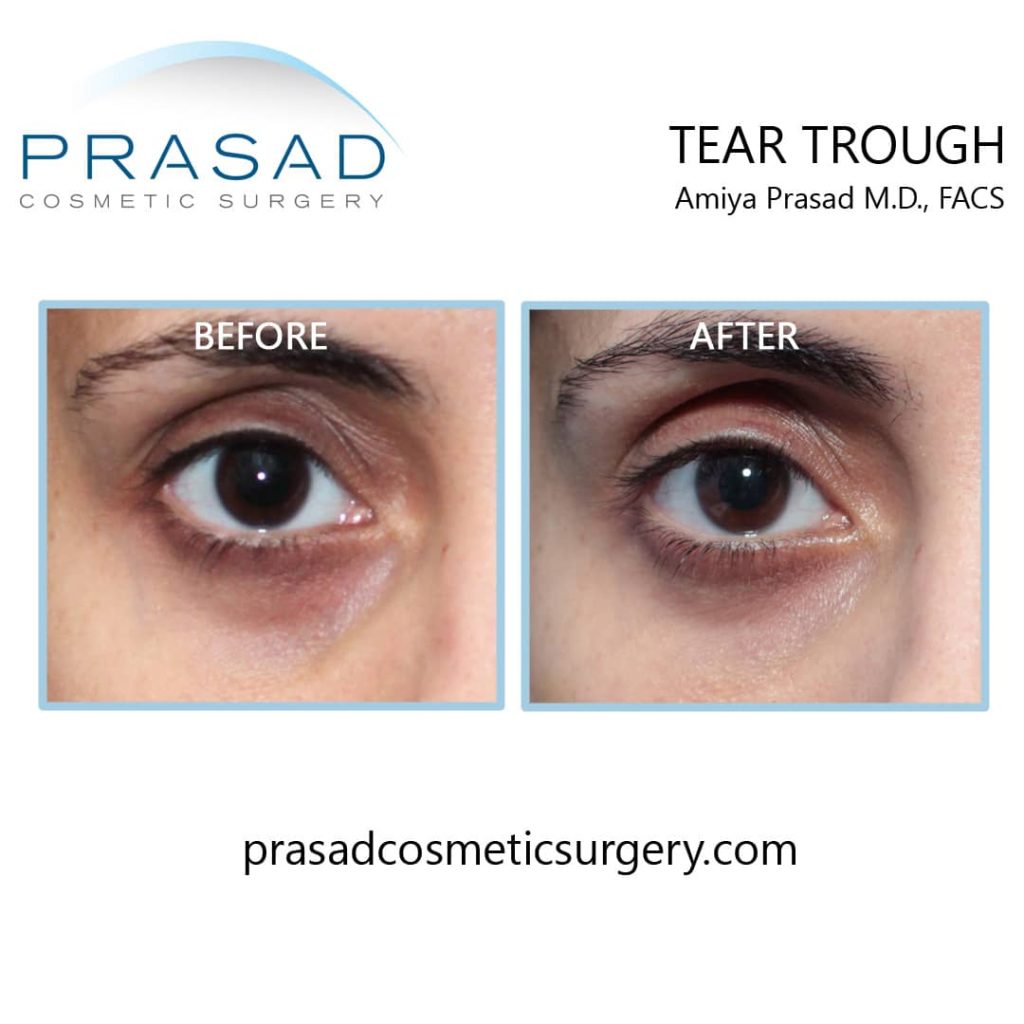
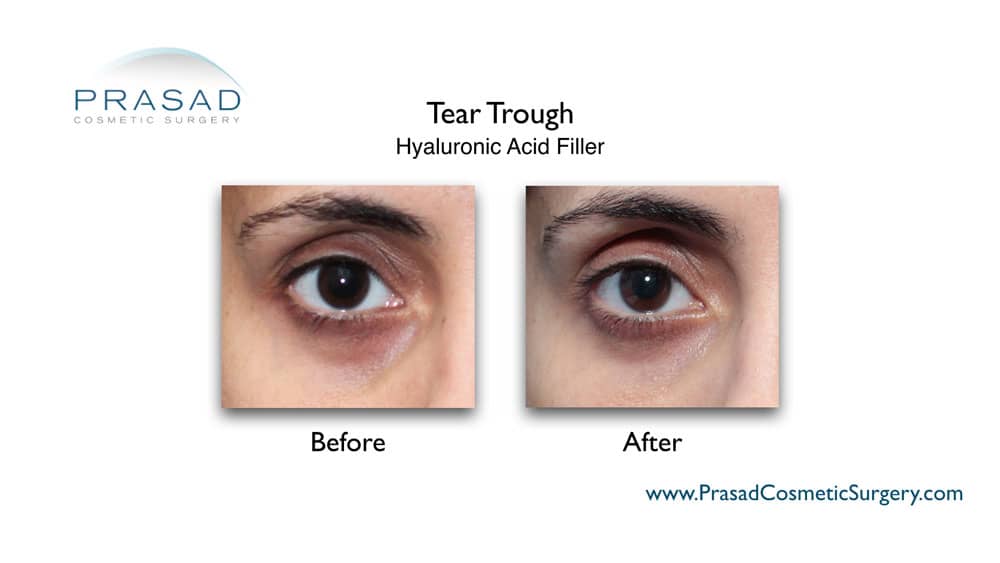
Hyaluronic acid that makes up fillers like Restylane and Juvederm occurs naturally in the body, so these types of filler are well-tolerated and safely metabolized by the body. I find that a filler is more customizable than an implant. Fat graft which can lose 30-70% of their mass during the healing process cannot be customized in the way fillers can. Unlike grafted fat, hyaluronic acid fillers don’t need to take to a blood supply. Further, I appreciate the security of being able to dissolve a hyaluronic acid filler within minutes of placement of an injectable enzyme called hyaluronidase.
Just as the face changes with aging as well as other factors such as weight gain and weight loss, filler placement can be customized to these changes, although orbital fat volume under the eyes is not affected by weight gain, or weight loss.
Hollow Under Eyes and Dark Circles Treatment
Hollow eyes are often accompanied by crepey and sun damaged skin. I often use PRP or platelet rich plasma to improve the quality of the delicate under eye skin. PRP or platelet-rich plasma is a concentration of the wound healing factors in your blood which stimulate collagen, and improve blood supply to the skin. There is also a medically well-established synergy between hyaluronic acid and PRP.
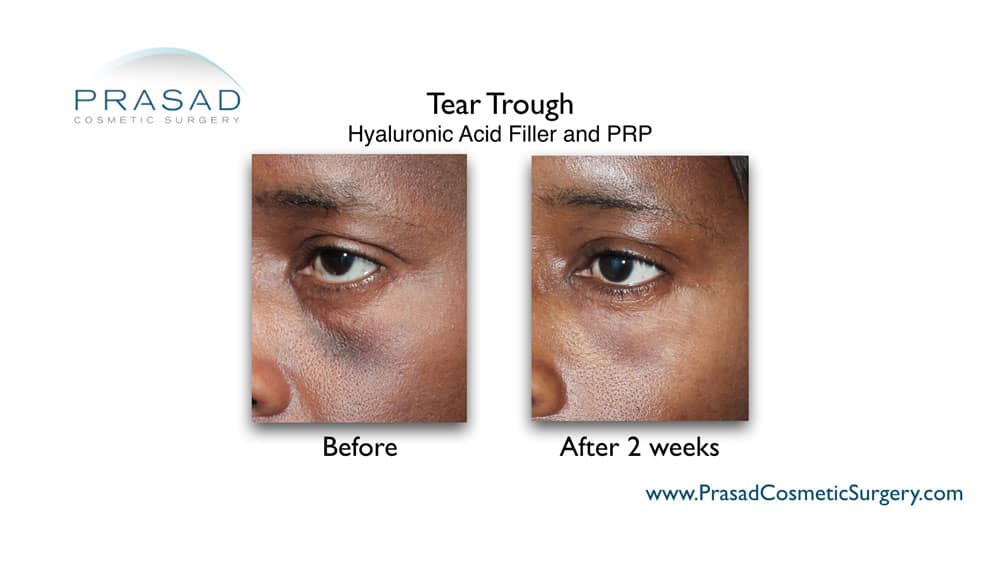
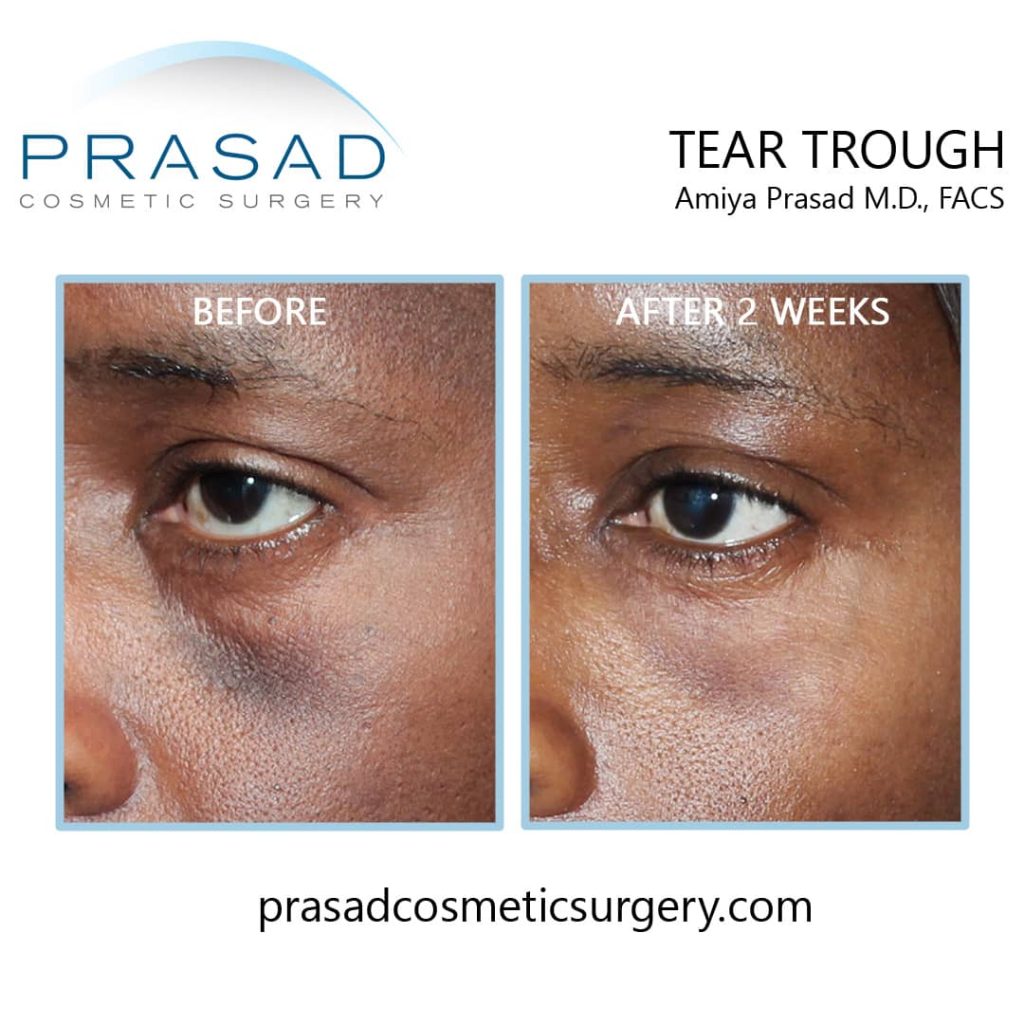
Placement of filler for the tear trough is quick, however I explain to my patients that it takes about 2 weeks for the material to settle. At the 2 week point, I look at the results and compare to the appearance before the procedure, and make enhancements as is appropriate. It’s always better to be conservative with the amount of under eye filler at first, and add during the two week follow up if needed; rather than using too much filler initially, then having to dissolve all the filler and start all over again.
When considering an under eye hollowing treatment option, it’s important to understand there are no permanent treatments as the body itself is not permanent, in particular, the bone and soft tissue. The eye area is delicate, and eyelid skin is the thinnest skin in the body. In comparing the options of tear trough implants, fat grafting and hyaluronic acid filler, my preferred approach is the use of hyaluronic acid filler. My ability to accurately contour with minimal trauma, with convenience as well as ease of removal makes hyaluronic acid filler the best choice for my patients for tear troughs and hollow under eyes.
